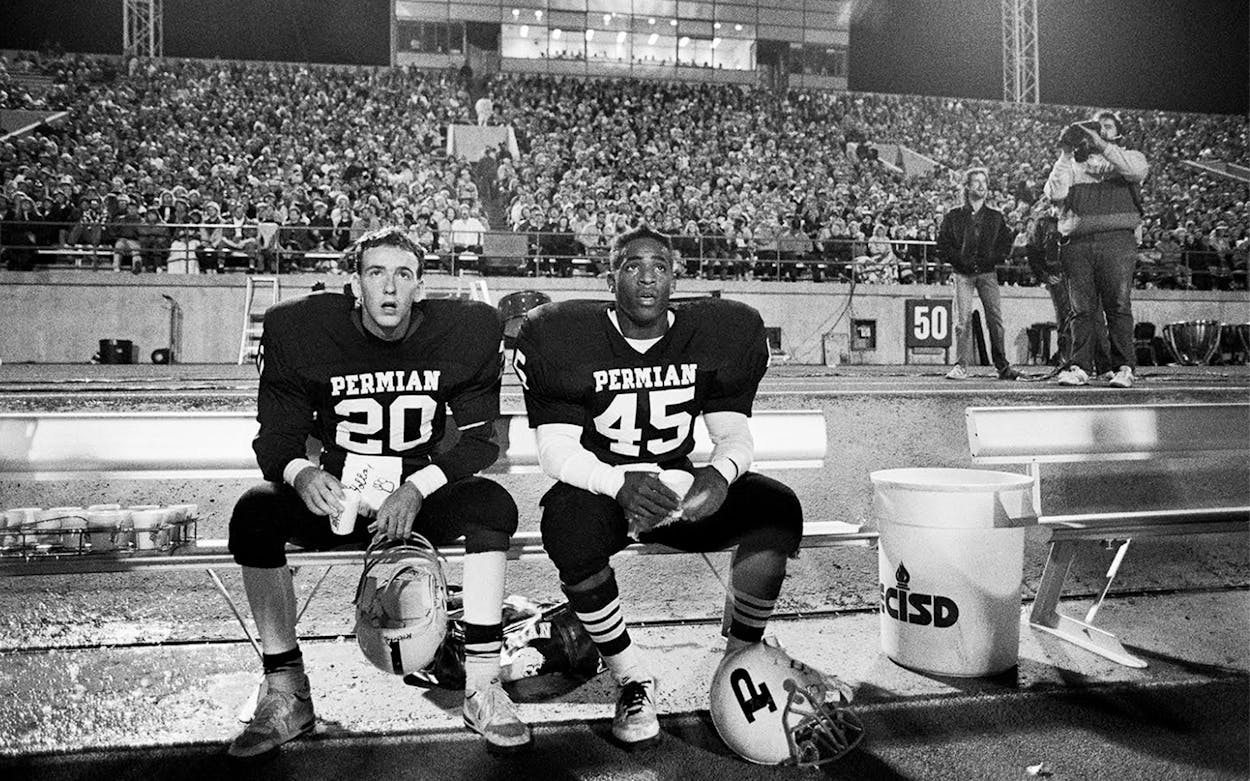Robert Clark was working as a contract photographer at the Philadelphia Inquirer in 1988 when he heard that one of the newspaper’s star reporters, Buzz Bissinger, was planning to move to West Texas to write a book about high school football. Just 28 years old and three years out of Kansas State University, Clark worked up the courage one day to buttonhole Bissinger. He only had one question: “Permian?”
Bissinger was shocked that Clark knew about the Permian Panthers, a.k.a. the Mojo, the legendary team that had dominated Texas high school football for the past several decades. Clark explained that he had photographed one of the team’s famous midnight practices while interning at the Fort Worth Star-Telegram. “You should hire me to shoot pictures for your book,” Clark boldly proposed. Bissinger did just that, and the rest is history: Friday Night Lights, Bissinger’s masterpiece about the Panthers’ 1988 season, featured a soon-to-be-iconic photograph by Clark on its cover, plus about twenty more images spread throughout the book—the perfect visual accompaniment to Bissinger’s lyrical evocation of a small town’s obsession with football.
To celebrate the book’s thirtieth anniversary this month, the University of Texas Press is publishing Friday Night Lives, a collection of all of Clark’s original images, plus 68 never-before-seen photographs, including present-day portraits of the book’s major characters. To assemble the collection, Clark reviewed all 137 rolls of black and white film he shot over his two-week visit to Odessa in the fall of 1988. In the process, he noticed images he had forgotten about, like a humorous shot of offensive lineman Ree Lucas leaning into a stock tank for a drink of water, and a quietly powerful portrait of Lucas’s fellow lineman Jonathan Golden standing in a locker room wearing a knee brace, his boots lined up neatly next to him.
Shot on Kodak’s ultra-high-speed T-Max P3200 film, the grainy photographs have a grittiness suited to the hardscrabble West Texas landscape—you can practically taste the dust in the air. Clark’s images of lonely highways and abandoned downtown storefronts have a grand, cinematic feel, while his portraits of players lifting weights, brushing their hair, or getting dressed for a game are almost unbearably intimate. Peter Berg, who directed the 2004 film adaptation of Friday Night Lights, once told Clark that though he loved the book, the photographs were what had convinced him it could be a movie.
Like Bissinger, who moved his family to Odessa for a year to write the book, Clark grew close to many of his subjects. Having competed on his high school cross-country team in the small town of Hays, Kansas, he felt a kinship to the Permian football players, who were only a decade or so younger. “I wasn’t that far from their world,” he says. In preparing the book, he was struck by how these macho-seeming athletes, who willingly sacrificed their bodies to win glory on the field, were in fact teenagers still poised on the cusp of adulthood. “They were just kids—they seem so much younger to me now than they did then.”
One of the most famous images in the book captures the aftermath of Permian’s devastating loss to rival Midland Lee, which nearly killed their playoff hopes. In the Permian locker room after the game, Jerrod McDougal, one of the book’s main characters, sobs and punches the wall, his fist a blur, as he cradles the head of running back Greg Sweatt. In the background, slightly out of focus and surrounded by cast-off shoes and pads, three other shellshocked Permian players look at the floor in resignation. As Clark relates in the book’s afterword, he nearly missed the shot. It was a cool evening, and when he walked into the humid locker room his lens fogged up, forcing him to rapidly disassemble his camera and wipe away the moisture before he could start snapping.
But Clark’s favorite photograph in the book—maybe his favorite photograph from an award-winning career that has included two decades at National Geographic—is a quieter shot of Mike Winchell, the introspective, intensely self-critical Mojo quarterback. At a Friday-morning pep rally, Winchell sits in the middle of a row of players, staring blankly into the middle distance, his almost expressionless face framed by a tangle of black and white balloons. In the midst of the revelry, he’s in his own world. “It’s a real honest moment,” Clark says.
Now based in New York City, Clark returned to Texas last year to shoot new portraits of the book’s central characters: Winchell, McDougal, running back Don Billingsley, tight end Brian Chavez, middle linebacker Ivory Christian, and coach Gary Gaines. Clark wasn’t able to track down Boobie Miles, the star Permian running back whose career-ending knee injury in a preseason scrimmage served as the emotional fulcrum of the book. Chris Comer, the running back who stepped up to replace Miles, died in 2018. Clark has tried his best to keep up with the players over the years, photographing many of them in 1999 for a tenth-anniversary photo spread in Texas Monthly. It was the unexpected news of Comer’s death, he said, that inspired him to finally complete the long-planned photo book.
“You know, everybody’s life goes on,” he says. “That’s what I love about still photography, that it freezes things in time. Not only an event, but life.”
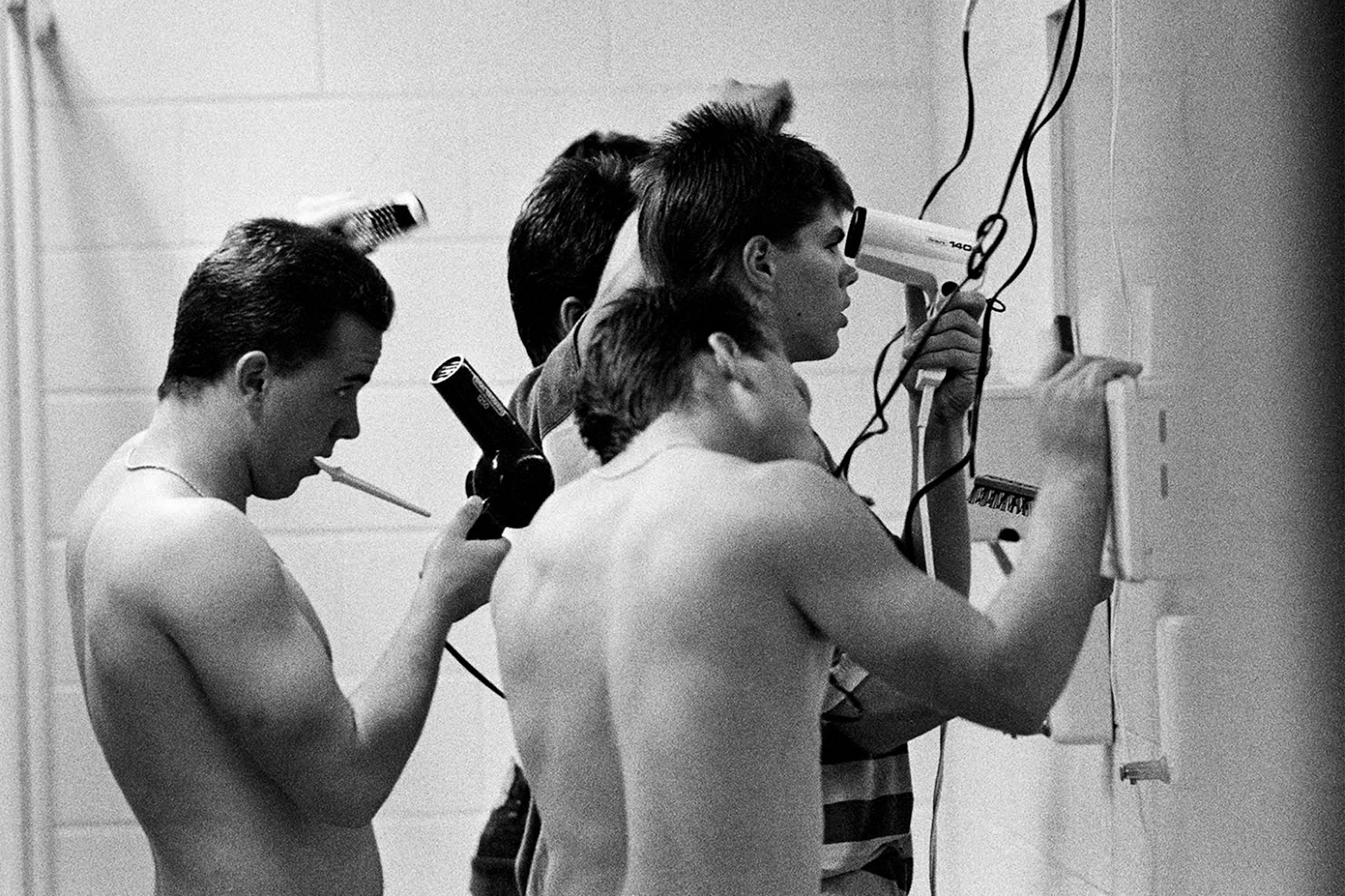
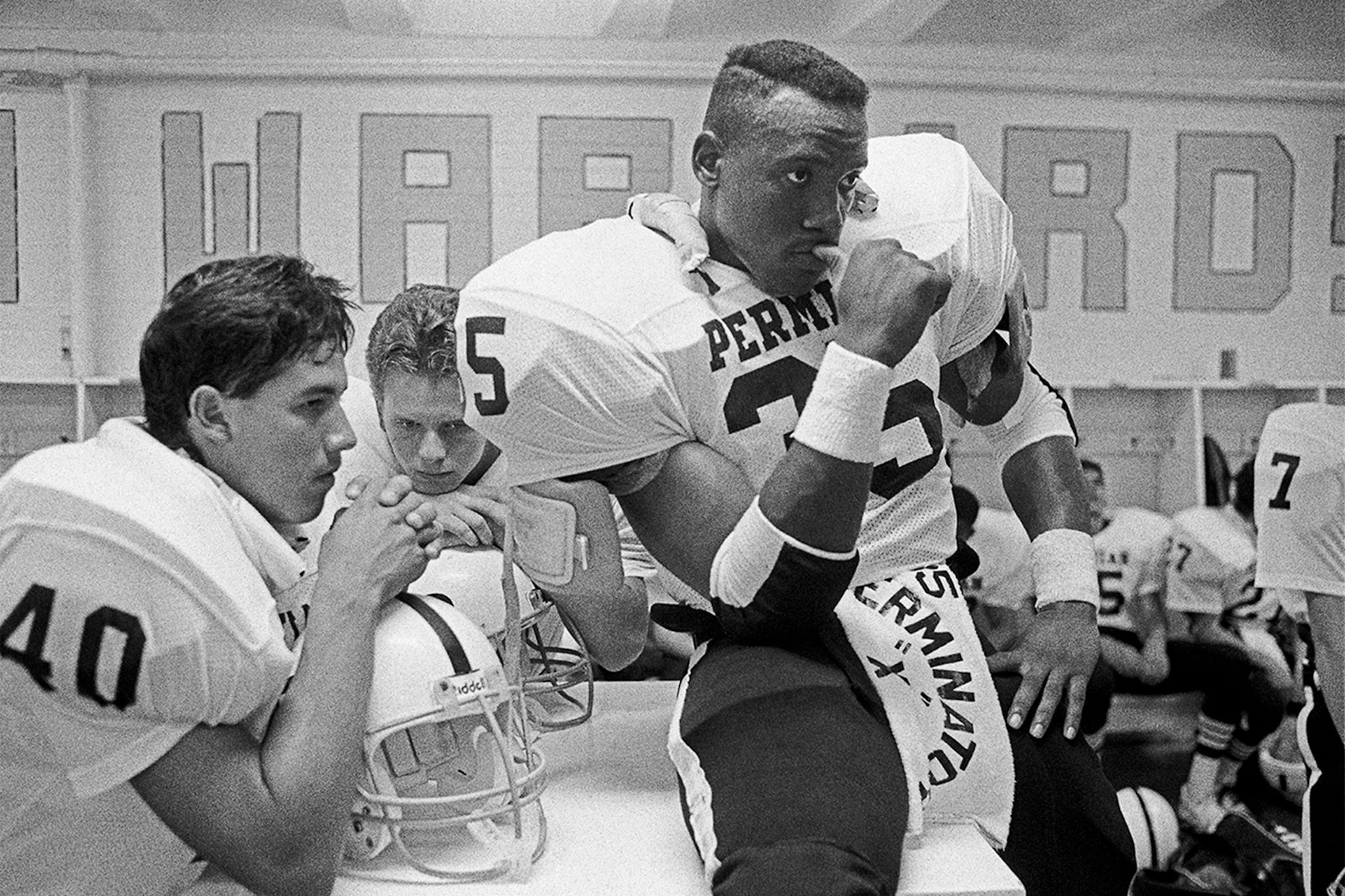
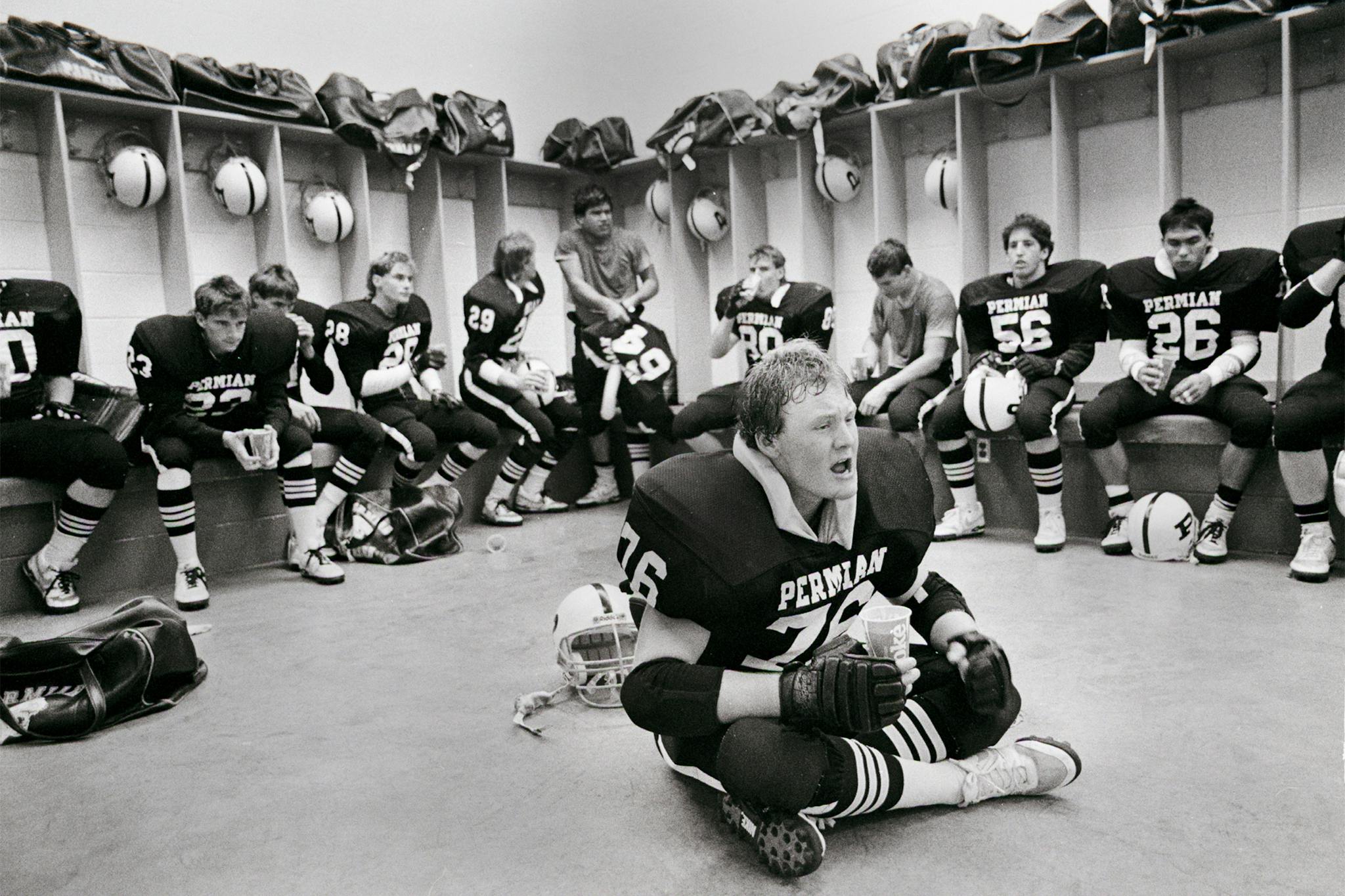
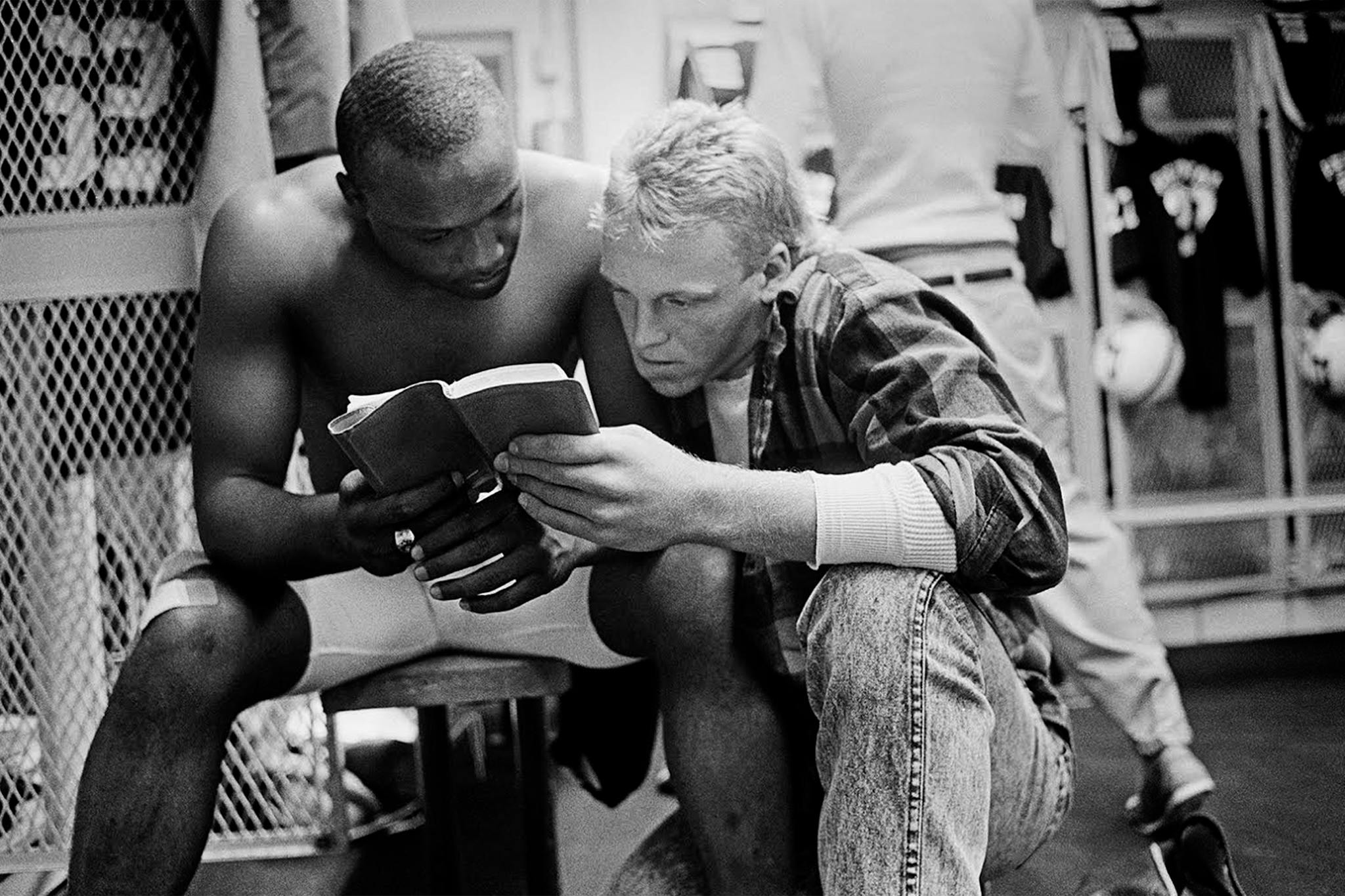

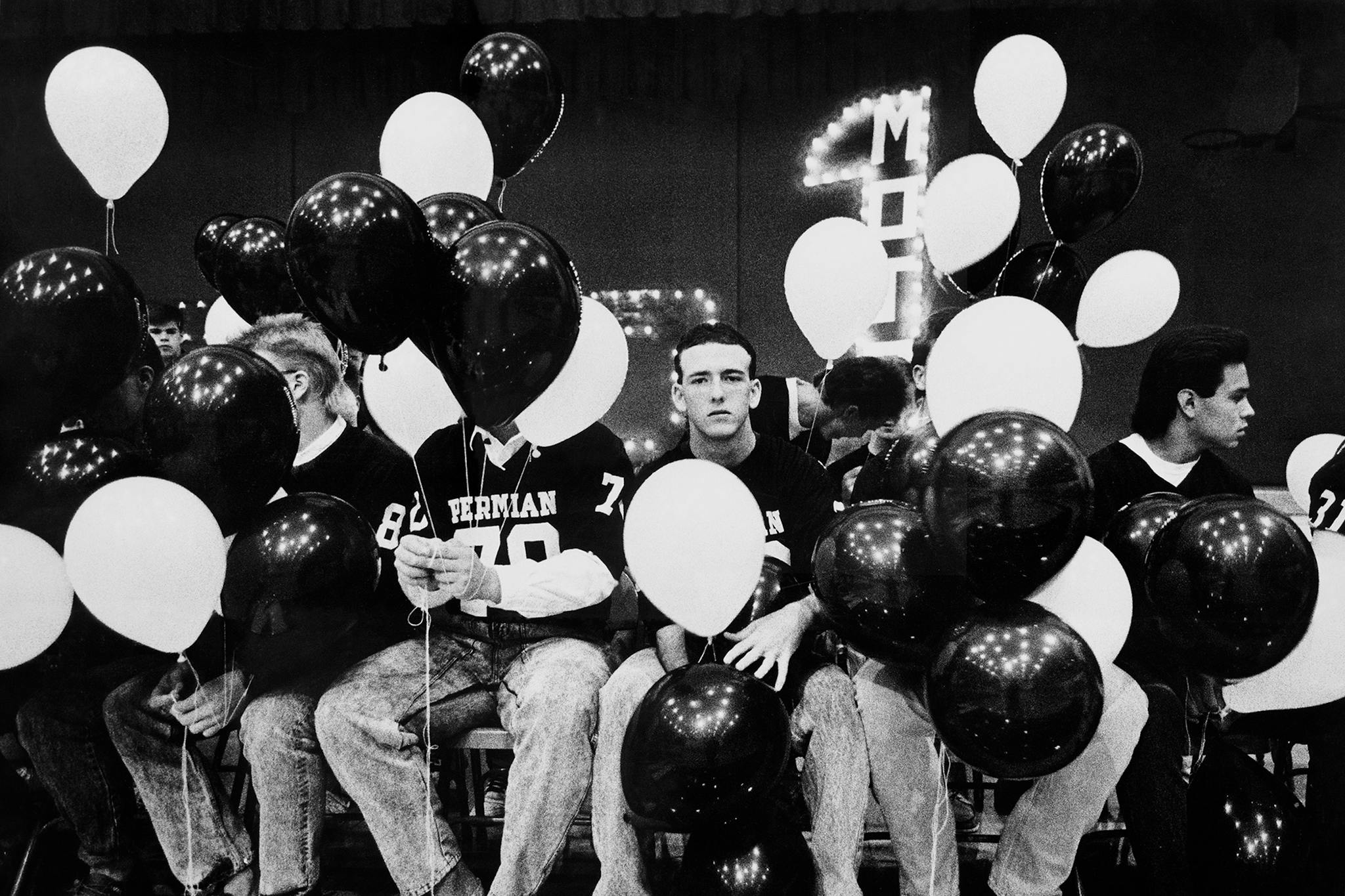
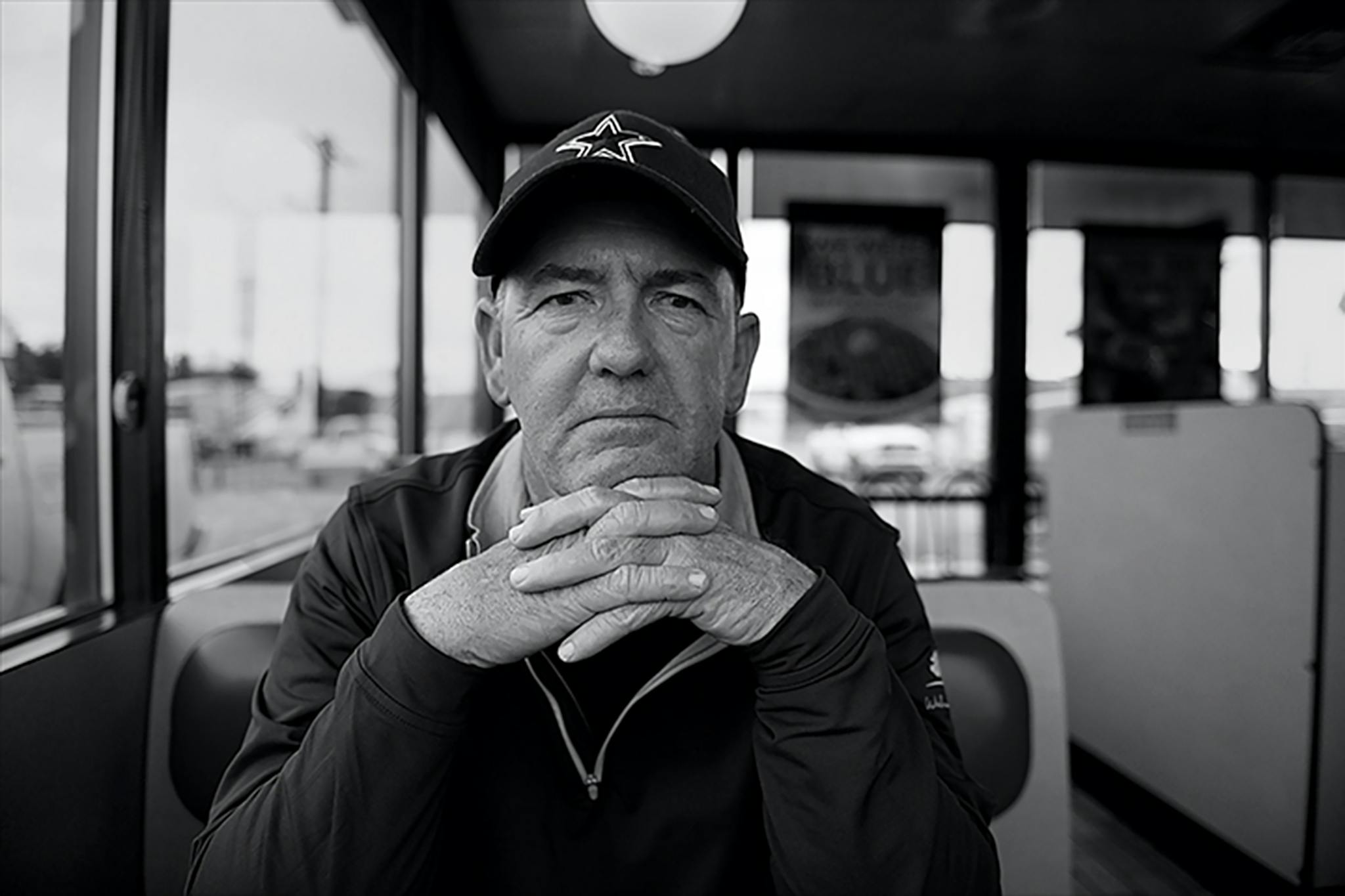
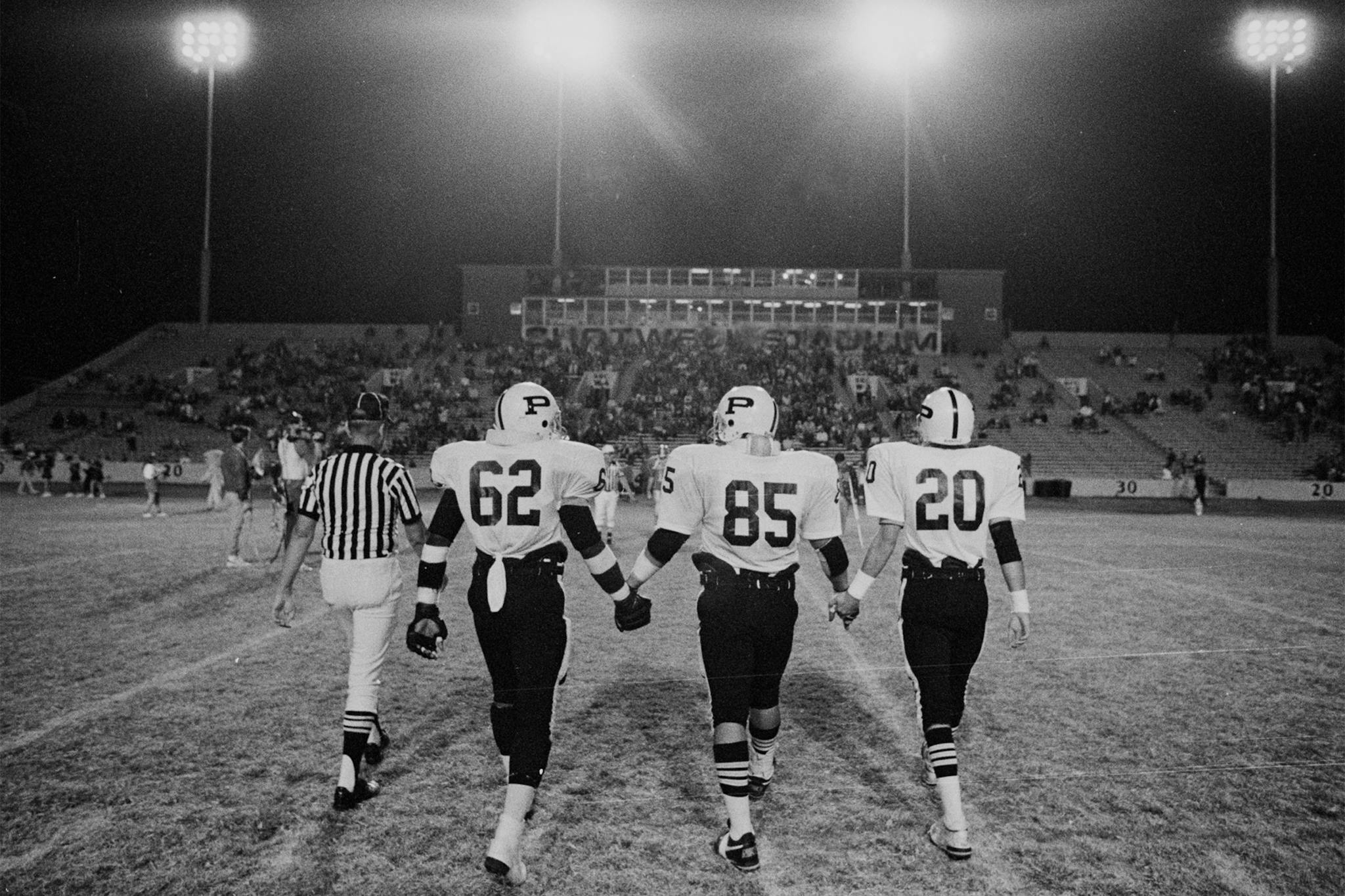
- More About:
- Sports
- Books
- Friday Night Lights
- Odessa
